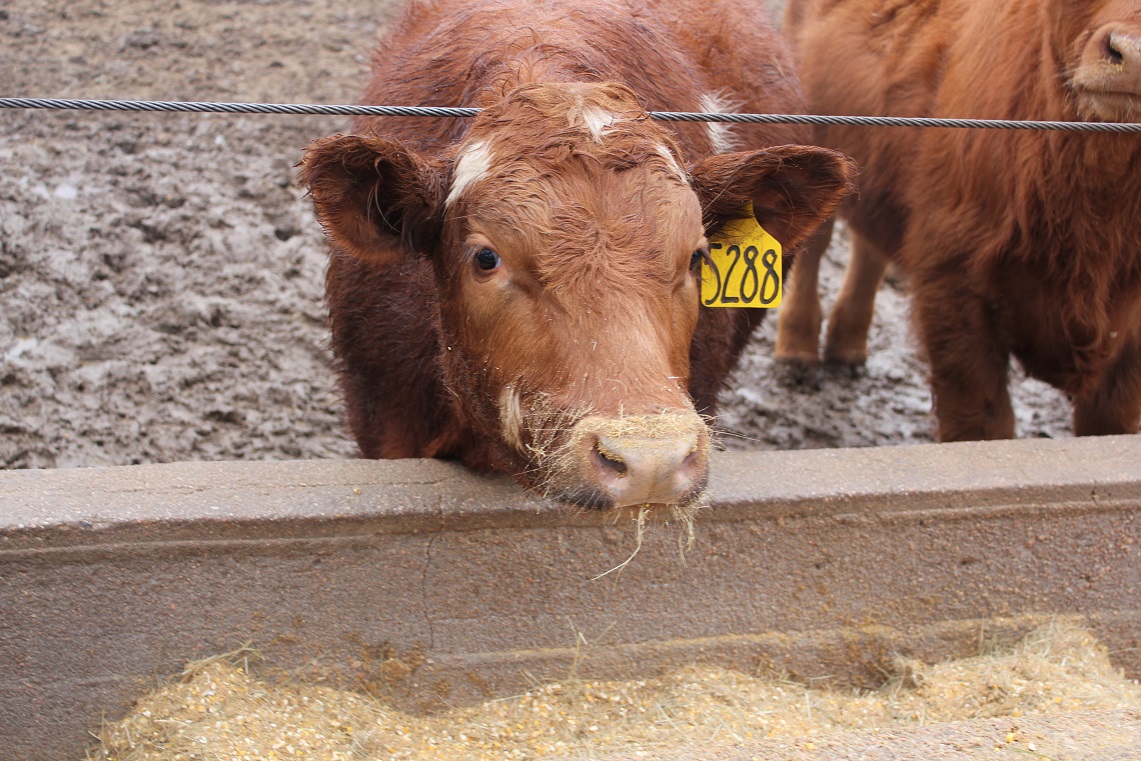
By Erin Laborie, Nebraska Extension Educator
Prolonged periods of mud and moisture in the feedlot can significantly hinder cattle performance and profitability. When cattle are standing in four to eight inches of mud, gain can decrease by nearly 15 percent. A feedlot with mud that is belly deep can depress gain by nearly 25 percent. Consequently, the negative impact of mud on feed efficiency can result in up to a 56 percent increase in cost of gain as more days on feed are necessary to reach finish.
Several factors figure in to this profit loss situation:
1) Cattle make fewer trips to the feedbunk during muddy conditions which results in lower feed intake.
2) Cattle utilize more energy trucking through the mud to reach the feedbunk. Muddy conditions can increase energy requirements by 10 percent.
3) Cattle can tolerate extremely cold temperatures when their hair coat is dry. However, if their hair coat is wet, maintenance requirements increase two percent for every degree below 30 degrees. For example, a feedlot steer has a 20 percent increase in requirements when his hair coat is wet and the outside temperature is 20 degrees.
Pen maintenance and design can greatly influence the level of moisture in the feedlot. Proper drainage and prevention of runoff water from entering pens is the first step in reducing mud within the pen. A slope of two to five percent from the pad to the lower end of the pen will provide adequate drainage; a three percent slope is ideal. Providing adequate space per animal can reduce mud depth especially in the high traffic areas around water troughs and feedbunks. It is recommended that finishing cattle have 250 square feet per animal.
Mounds should be utilized to provide a dry area for cattle to rest. They should be four to six feet tall, provide 20 to 40 square feet of space per head on each side of the mound, and be constructed so that cattle can step off the mound and onto the feeding apron without having to move through mud.
When muddy conditions do occur, a box scraper can be used to remove some of the mud. Frequent removal of excess manure and bedding will reduce moisture retention and help pens dry out more quickly. Considering every 10 inches of snow equates to about an inch of moisture, be prepared to remove snow before it melts.
Although adverse weather conditions cannot always be predicted or prevented, preparing for these unfavorable circumstances by having a plan in place can help. For more information, see “Mud Effects on Feedlot Cattle” in the 2011 Nebraska Beef Cattle Report (http://beef.unl.edu/c9405542-1c41-4b9c-a143-f192e1e72917.pdf). Feedlot design is also discussed in UNL Extension Circular EC777, “Planning a New Cattle Feedlot” (http://digitalcommons.unl.edu/cgi/viewcontent.cgi?article=5873&context=extensionhist).
To listen to BeefWatch podcasts go to: https://itunes.apple.com/us/podcast/unl-beefwatch/id964198047 or paste http://feeds.feedburner.com/unlbeefwatch into your podcast app.